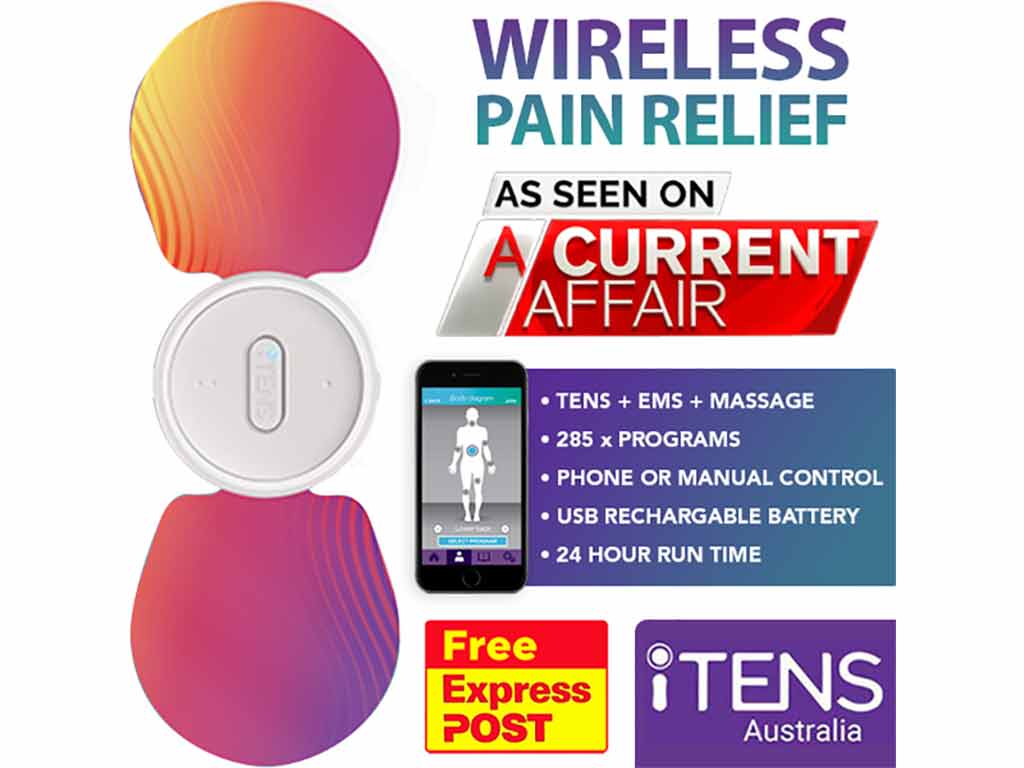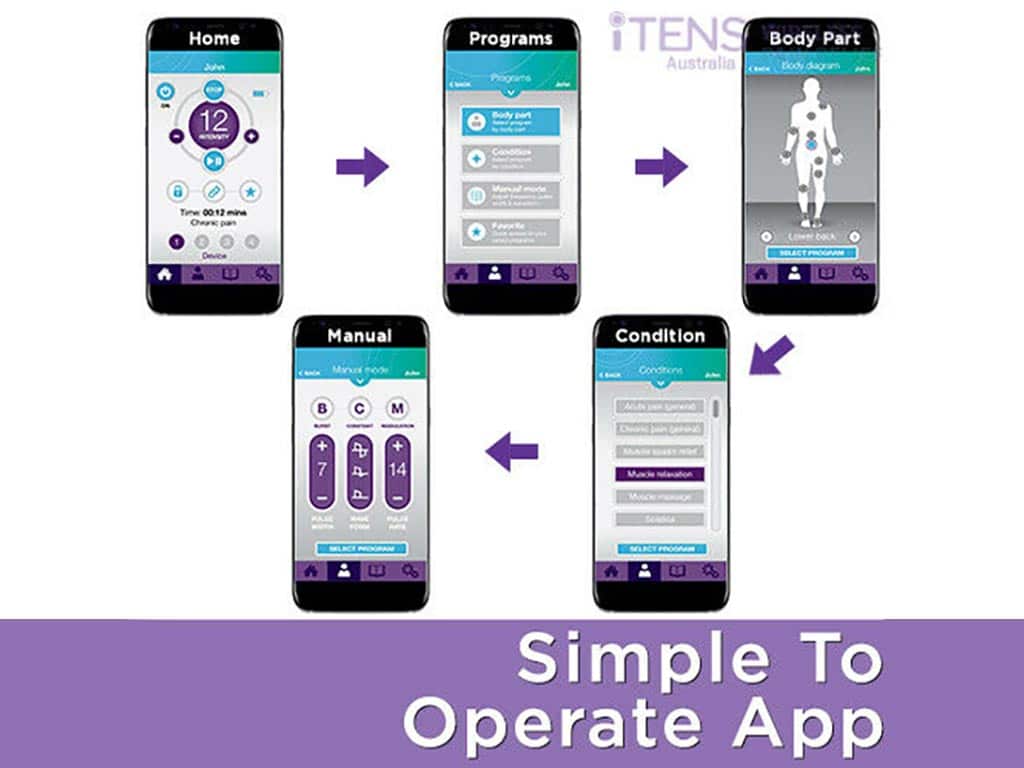
For many women, period pain can be debilitating and significantly affect daily life. As a result, many continue to look for alternative ways of managing this pain. One option is Transcutaneous Electrical Nerve Stimulation (TENS). Using a TENS machine for period pain is an effective method that can help improve the quality of life. It provides period pain relief by triggering the pain gate mechanism and endorphin release to naturally decrease the pain intensity and even reduce muscle spasms.
TENS therapy is a non-invasive and drug-free method of alleviating pain. Many use it in medical settings for acute and chronic pain conditions, like joint pain and sports injuries. Some also use personal devices in the comfort of their own homes. They are available online and in pharmacies for convenient use. Nevertheless, consulting a healthcare professional is ideal before using TENS. This article will present information on TENS machines, how they work, and how to utilise them.
What is a TENS Machine for Period Pain?
Menstrual pain or dysmenorrhea are aches that many women experience at the start of their menstrual cycle. It has many causes and can affect the lower abdomen, lower back, and thighs. Furthermore, it can cause abdominal cramps that result in debilitating pain. To treat this, many use over-the-counter medications. However, this does not work for everyone and can have severe adverse effects. Fortunately, some alternatives provide drug-free pain relief.
A TENS machine for period pain is a small, battery-operated medical device that delivers low-voltage electric currents to the body. It uses externally applied adhesive electrodes to provide targeted relief from period pain. It also has adjustable settings to customise the treatment based on the preferences and needs of the person.
People can buy TENS machine units at pharmacies, medical supply stores, and online retailers. There are generally two types from which individuals can choose. Traditional units use lead cables to send electrical impulses from the control unit to the electrodes. Meanwhile, wireless units utilise Bluetooth to connect controllers or smartphone apps to the electrode.
Causes of Menstrual Cramps
- Endometriosis: a condition wherein tissues similar to those that line the endometrium start growing on other structures, such as the ovaries, bladder, pelvic floor muscles, and even the brain.
- Uterine Fibroids: common, non-cancerous tumours that grow on the muscles lining the uterus.
- Adenomyosis: a condition that occurs when the tissues that line the uterus start spreading and growing the muscle wall.
- Pelvic Inflammatory Diseases (PID): bacterial infections that affect various reproductive organs, like the fallopian tube and ovaries.
- Congenital conditions: some women may have genetic conditions that affect the shape of their ovaries or fallopian tubes, contributing to period cramps.

How a TENS Machine for Period Alleviates Pain?
A TENS machine for period pain works by sending electrical pulses to the sensory nerves. Users can adjust these settings depending on the pain intensity and their comfort level. Different settings can produce different results. Moreover, advanced units also have preset modes tailored for specific aches.
One of the ways TENS units alleviate pain is by using the pain gate mechanism. This suggests that high-frequency stimulation can trigger the spinal nerve fibres to block the transmission of pain signals. This results in immediate pain relief that also works on other acute pain conditions.
Another method is by triggering the production of endogenous opioids. These are natural painkillers that bind to opioid receptors, resulting in lower pain intensity. Moreover, endorphins help reduce inflammation and stress. This results in improved moods and a better sense of well-being. Lastly, TENS can also increase blood circulation to the target area. This can relieve sore muscles and reduce muscle spasms. Overall, TENS provide natural relief that can benefit many women.
Benefits of TENS Therapy
There are several benefits to using TENS therapy. Firstly, it is non-invasive and drug-free. This means that there are no risks of complications or adverse effects from surgery, injections, or taking oral pain medications. Moreover, it helps people reduce their dependency on medications for chronic conditions.
Secondly, it is complementary to other treatments. Since it does not interfere with other treatment modalities, it can supplement other methods for faster recovery or more effective relief. Lastly, TENS is easy to self-administer, so individuals can enjoy relief whenever needed. They also have portable and lightweight designs, allowing users to bring them to various locations.

How to Operate a TENS Machine for Period Pain
Operating a TENS machine for period pain involves a straightforward process. To start, the user must apply the pads near or on the pain source. Afterwards, they should check if the pads are properly connected to the control unit. Once they are secure, the user can start the session. They may set a timer to keep track of the duration of the session.
Ideally, the user should start on low-intensity levels. Doing so can prevent electrical shocks or discomfort from the stimulation. After, they may gradually increase the settings if needed. Selecting a preset program is another option for more convenient use. Once the time runs out, the individual should turn the unit off and remove the pads.
TENS is generally safe to use more than once daily. However, users should take at least a 20-minute break to prevent overstimulation or skin irritation below the electrode site. In addition, people can preserve and maintain their adhesive pads by cleaning them with a few drops of water and a cloth after the session.
Where to Place the Electrode Pads?
Electrode placement is crucial when using TENS therapy. Hence, many people refer to charts or guides for pointers on where the best placement is for their condition. Generally, users should attach the electrodes to muscles near the source of discomfort. For period pain, the ideal placement is below the belly but above the pubic region.
Others can also apply electrodes to the lower back, on either side of the spinal cord, to address lower backaches. However, it is best to focus on one area per session. In addition, they should ensure there is at least an inch gap between the pads to avoid interference.
Conclusion
Using a TENS machine for period pain is an effective alternative to taking opioid medications. It is non-invasive and easy for people to self-administer whenever needed. This small electrical device for pain relief uses adhesive pads to deliver electrical currents to the sensory nerves. This stimulation can activate the pain gate mechanism or induce endorphin production. It can also increase blood flow, reducing muscle spasms.
To operate a TENS unit for period pain, the user must apply the pads below the belly button and above the pubic region. Afterwards, they may adjust the settings accordingly. TENS is safe for many people to use. Nevertheless, consulting a healthcare professional is ideal to ensure compatibility and safety. There are many TENS products that people can select from. Those interested in purchasing a wireless TENS unit may consider the iTENS from iTENS Australia.




















